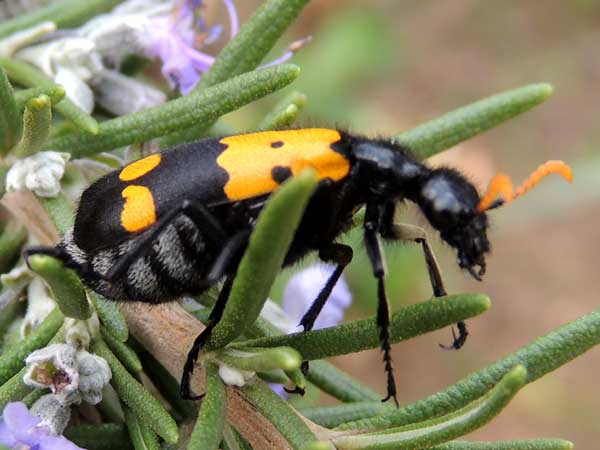Meloid Beetle
Mylabris sp.

Observed near Nakuru feeding on flowers of Rosemary. Kenya, July 2014. About 15mm in length.
Blister Beetles, like the one shown here, are a contrast of beauty, danger, chemistry and a life history, that to humans, seems abhorrent. Many blister beetles are so toxic to mammals that ingestion of a few may be enough to kill a horse. It happens occasionally when the beetles get wrapped up into a bale of hay, quite by accident. Birds somehow just know that a beetle with this pattern should never be eaten, and they leave them alone. There are many, many species of Mylabris distributed across Africa, Europe and Asia.
The distended abdomen of this female holds hundreds of eggs. Upon hatching the larvae emerge as minute, mobile insects (triungulins) that home in on a host insect to parasitize. Very often this is a ground nesting bee to which the triungulans attach themselves and proceed to feed upon the host, finally destroying it as they grow.